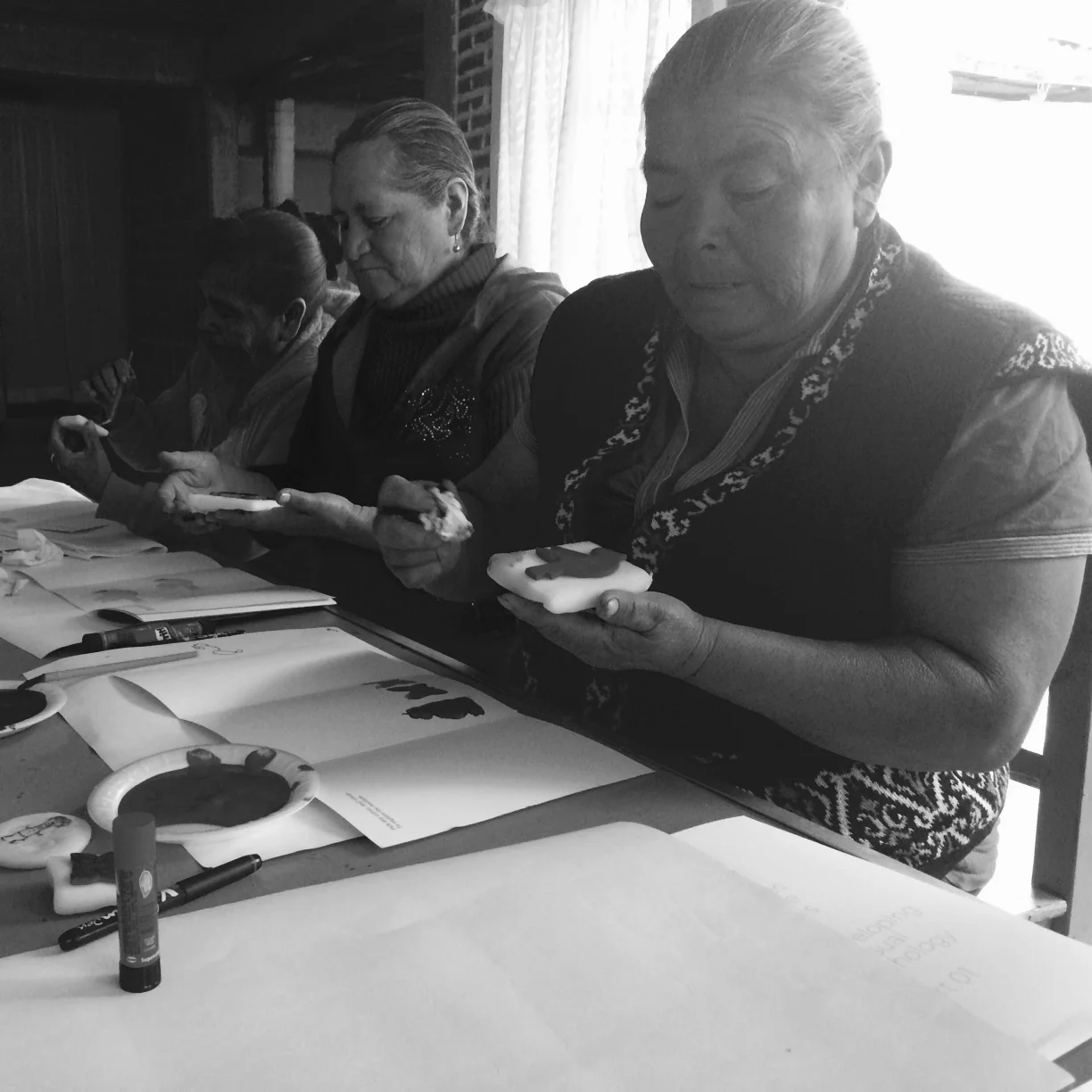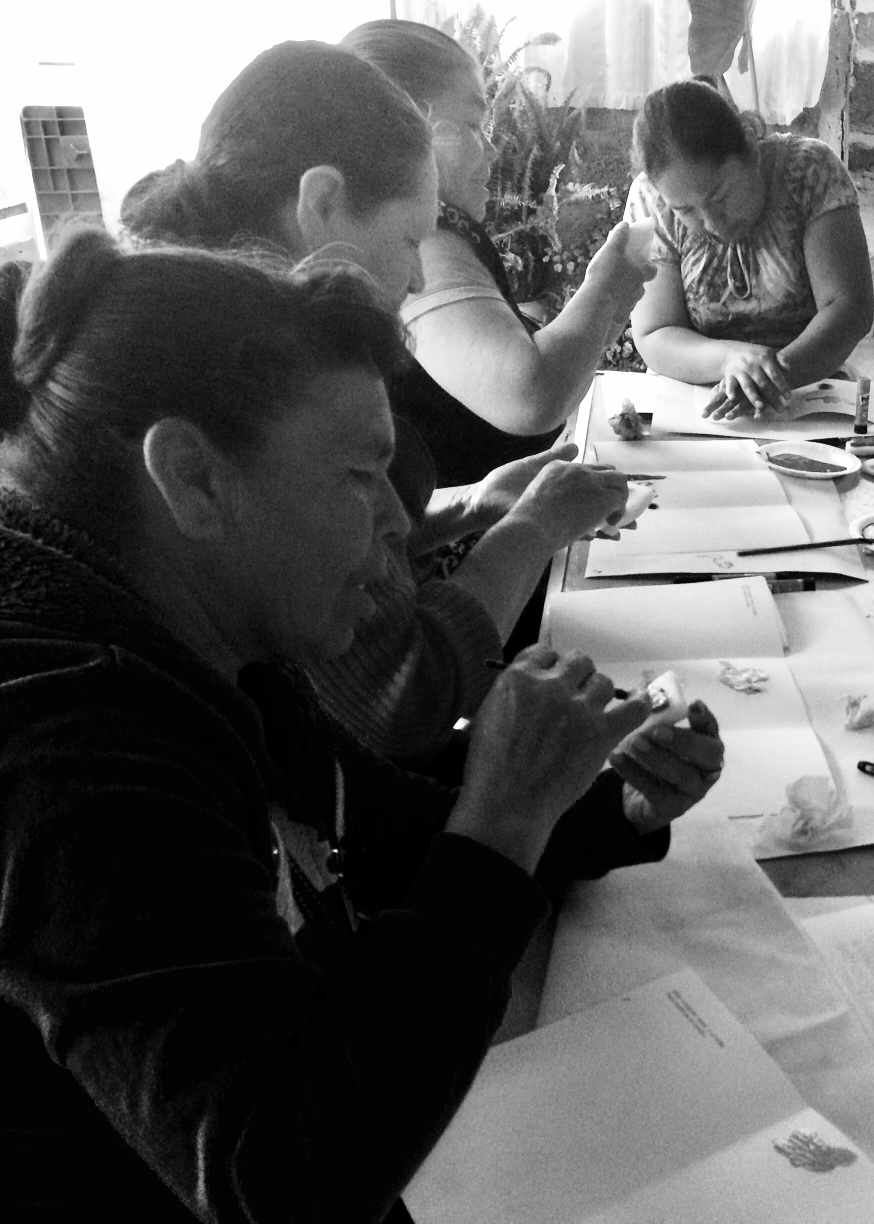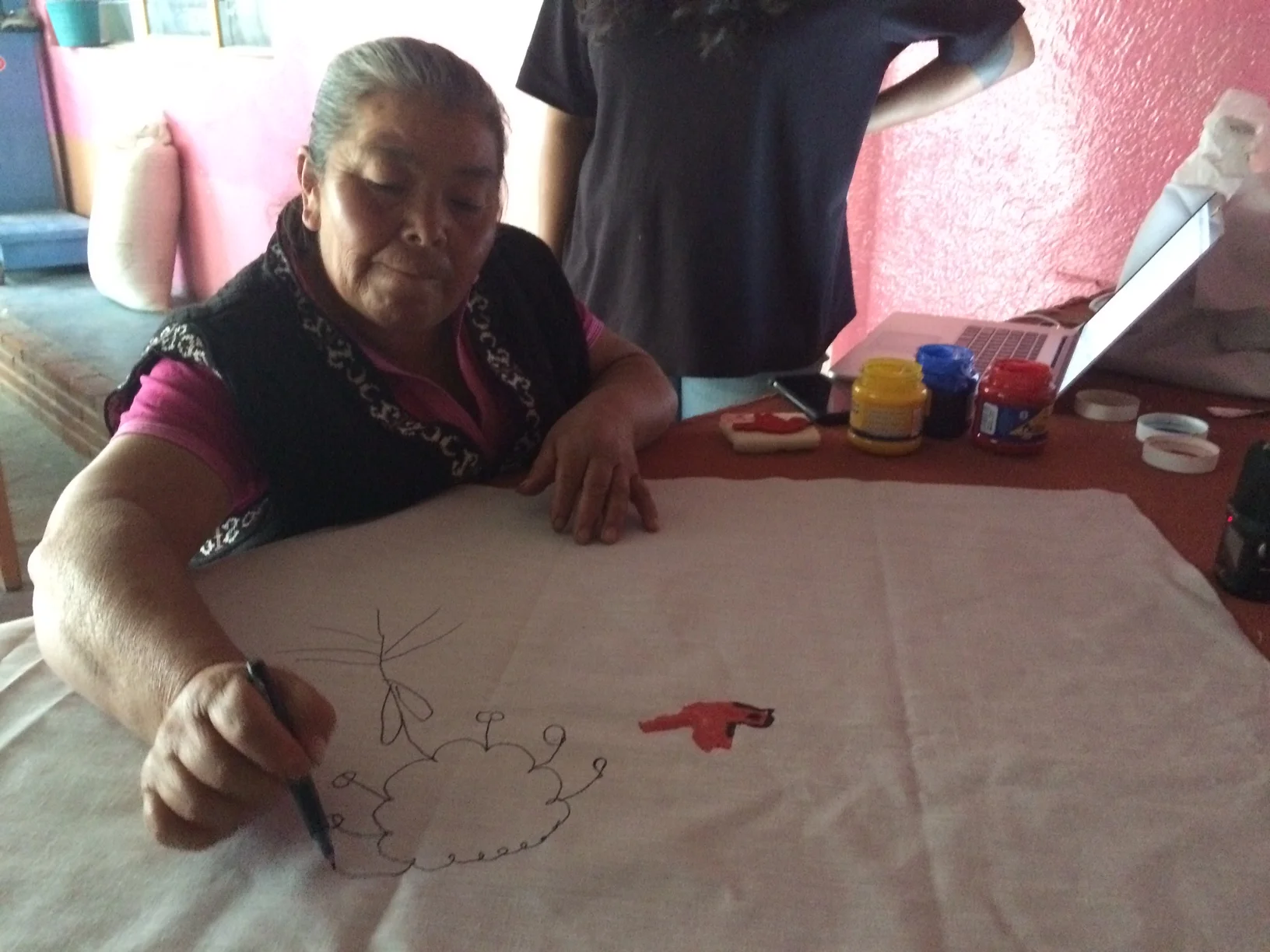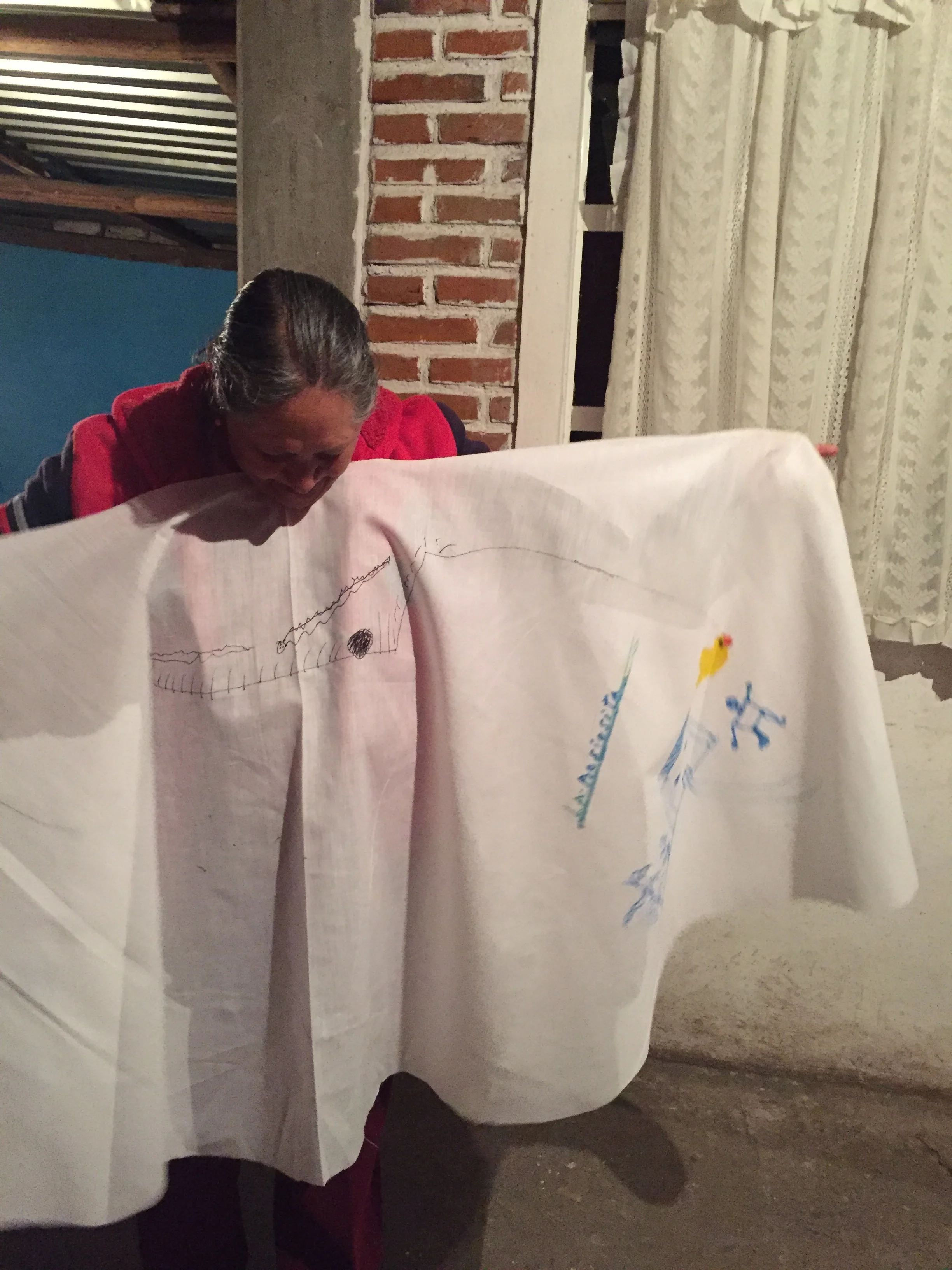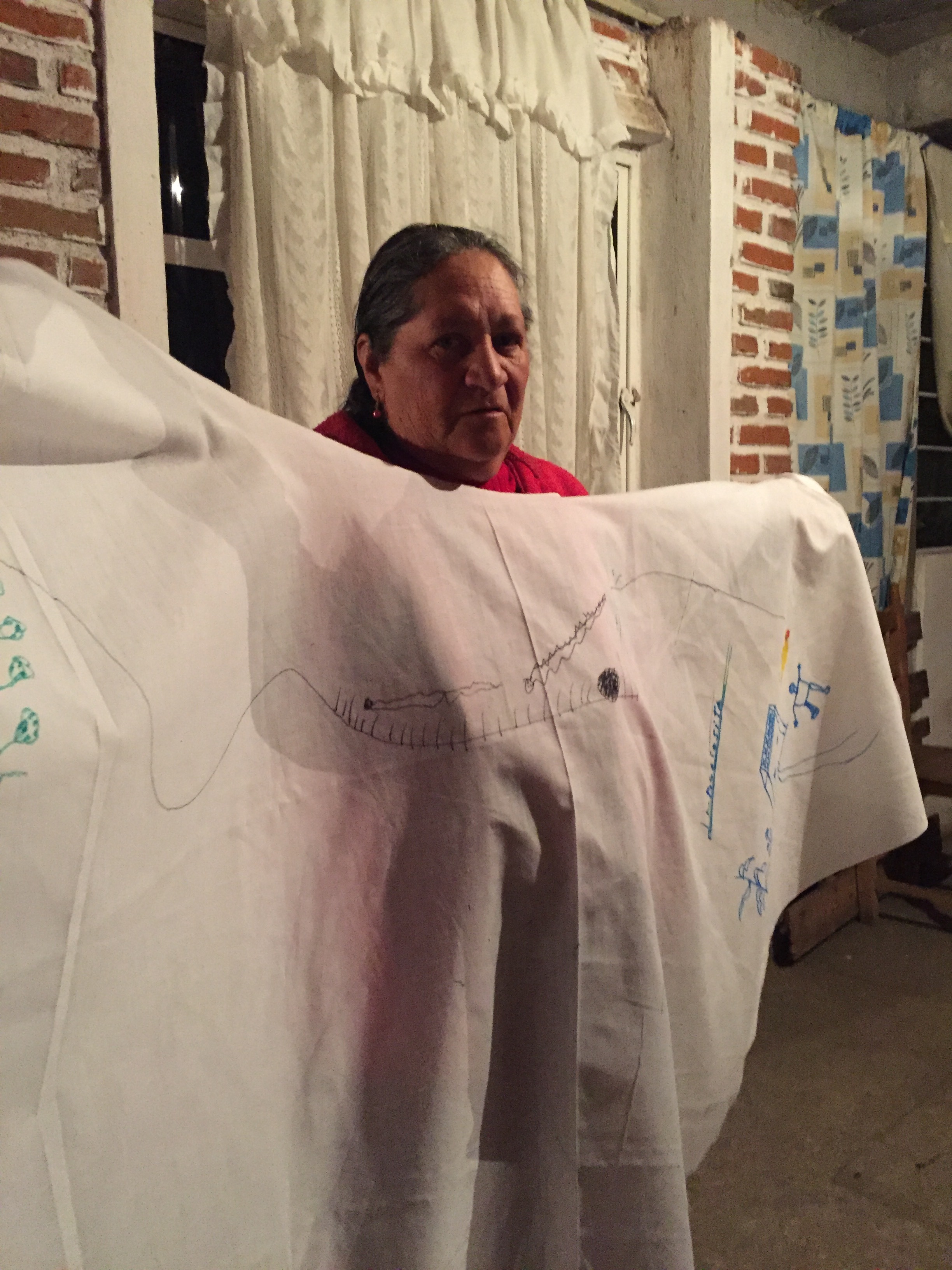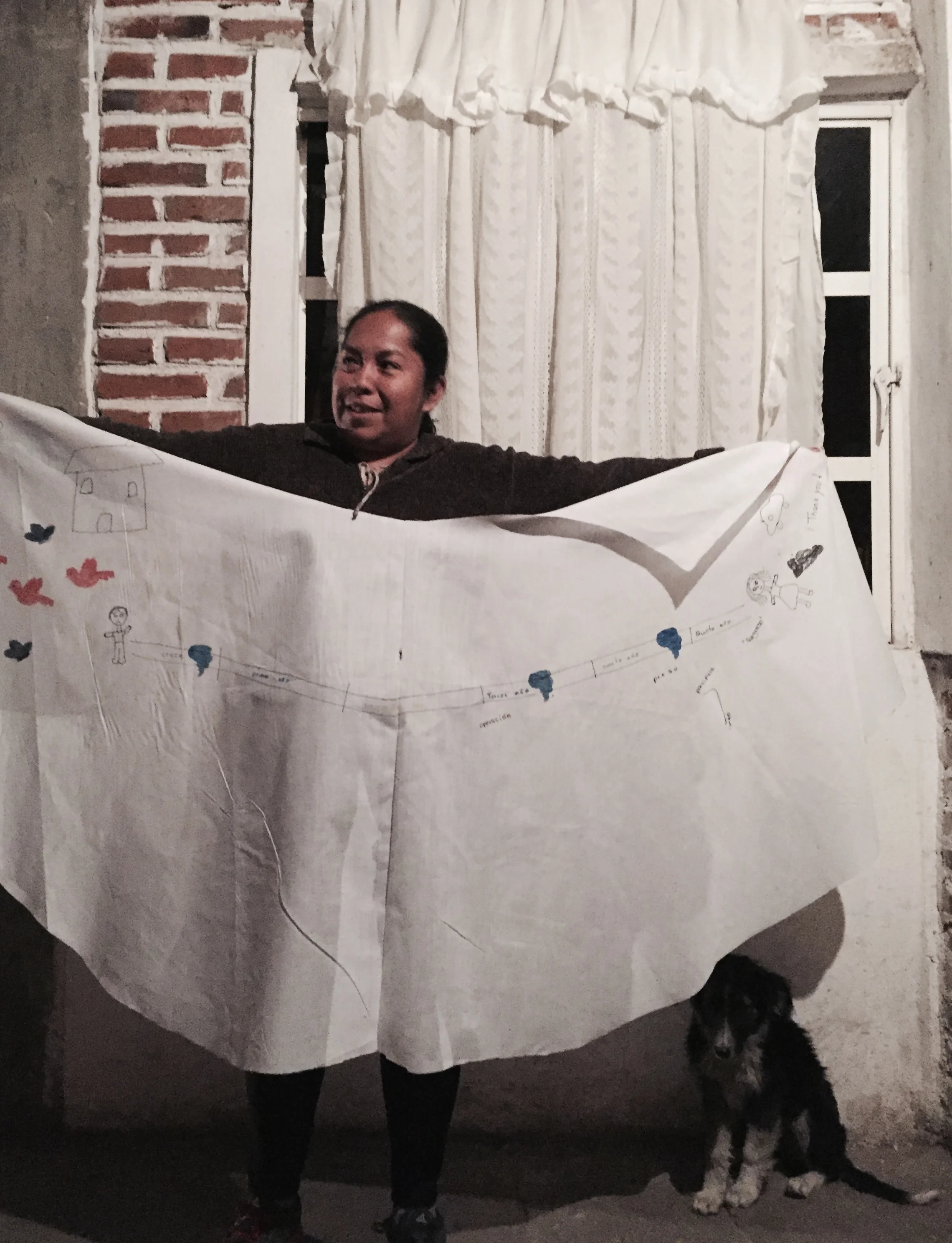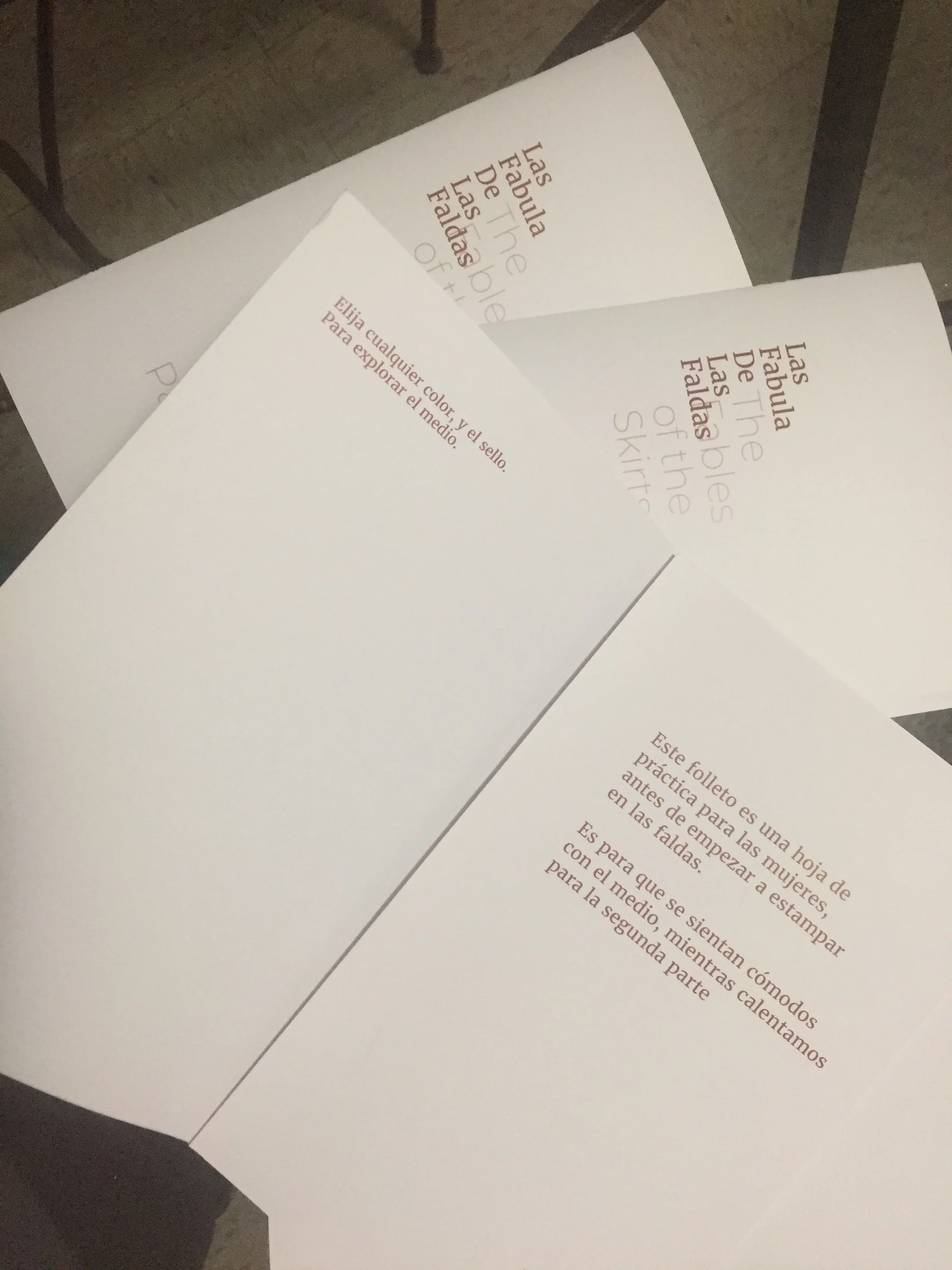La Fabula De Las Faldas
Published as Hacking the Research Fabric: Designing Spaces for Intimate Dialogue
in Insight 2018, National Institute of Design Publications
A design ethnography project, that lasted 3 months in Mexico City and La Preciosita, where I led the research and worked with individuals to understand how migration impacts the women and communities in Mexico. As a researcher I approached this project with alternative methodologies and used clothing as a journey mapping tool.
Location
La Preciosita, puebla, mexico.
role
DEsign ethnographer
The CHallenge
Designing alternative methods to engage in an intimate dialogue with members of migrants’ families; to understand how migration and displacement changes the community left behind.
skirt as a journey mapping tool
The research methodology was structured to enhance the learning experience and building alternate communication mediums for different communities, while engaging them in an intimate dialogue. Through a process of transferring stories on the skirt, this methodology interrogated the anatomy of skirts and how they can be viewed as a canvas for one’s story and not just an article of clothing. While the earlier parts of the workshop focused on starting a dialogue, the skirt provided a gateway to gather stories that were personal and intimate to participants. As a tool, the skirt captures nuanced expression and serves as an intervention tool. It's through this expression that the skirt changes from a canvas to an artefact, serving as a personal agent for a personal story.
Due to its highly contextual nature, this medium helped me understand how a locally chosen material can help build familiarity and encourage participants to indulge in a conversation. Where in Mexico I used skirts, I could see using sarees in India-- as a medium of conversation-- with women of varied communities. Skirts, during this field project, served as a design contribution to understand the limits and mediums of journey mapping.
process
1. WORKSHOP WITH SEÑORAS
The interaction sessions where structured in progressive interaction and deeper engagement. With each step the I gathered more intimate information about the community and slowly placed myself as a listener amongst the women. Since my field study was about understanding one community and its dynamic, with its varied facets, I developed a methodology that could help me introduce to my field and its constituents.
The first step was an unpresuming workshop where we discussed the women of La Preciosita, and how these women see themselves. This workshop was to get acquainted to the women of the village and their culture. The workshop itself was divided in three parts, where the last two parts introduced materials for the participants to introduce themselves. We started with introductions, and questions on how these women evaluate migration and its effect on their surroundings. The first phase was conversational, and about women opening up and acknowledging me as an observer/listener and not a dominant interviewer.
With the second step we started looking at activities, through which we could ask deeper questions. We used word and colour association as a way to talk about the identities of these women. The women picked four words to represent themselves, associated each with a colour, and individually ranked them in order of relevance to represent multiple layers of their identity. This exercise specifically proved to be highly insightful as the women picked their own words, which I would've never assumed or picked for a group of women. They represented themselves as fighters and active participants. While each word was very powerful, it also served as a way for women to talk about their personal experiences while describing what the word means to them.
The third step within the workshop was transitional as it led to more conversations and provided a break for participants to practice stamping on paper. During this process, the women started indulging in the material that they were going to use on the skirts. This practice resulted in them focusing more on their stories and answers, instead of being distracted due to the material. The playfulness of this material created an anticipation for the next step and helped me generate more excitement for the skirts. The workshop ended with them picking up an animal for themselves and their relatives, and as a departure point we discussed why and how does the given animal embodies their attributes. The gap between the workshop and individual sessions gave the women time to practice more stamping and engage in other activities.
2. INDIVIDUAL INTERACTIONS
The individual sessions were more about journey mapping, but through differently posed questions and an alternative medium. Using the anatomy of the skirt, I dedicated questions to certain parts of the skirts which we directed the participant to walk through while talking about their experience. After picking up an animal to depict themselves and their relatives, the participants used stamps to position their animals on the two ends of the skirt but then used varied materials to depict the environment around each. After developing the animal and its environment, we talked about the journey and its nature that was taken by their loved ones. Using this journey as an anchor, we used the major part of the skirt to talk about the difficulties that were faced by these women.
With each woman, the challenges were different, as one wanted to represent more than talking, but the other used writing as a mode of expression. While constantly iterating questions, I realised how these women were taking ownership of the story due to the material they were drawing the story on. As an artefact a singular skirt doesn't depict. Elisabeth used the space on the skirt meticulously through division and text, where as her mother-in-law Benita knew exactly what she wanted to represent and created her own narrative. In which case, I had to improvise the interview script and ask the questions in the way she would like to answer.
3. PROCESS OF RELATIONSHIP BUILDING
Through my research and interventions I try to build relationships with my participants, over repeated and extended interaction. The key is to slowly gain acquaintance, which leads to more exchange of information and understanding of a given context. While on field, I used skirts was a starting point to place myself in the community. With my second visit, I spent more time in their homes, eating and lodging in the same vicinity, and visiting their fields, which led to more conversations. Though my
second visit wasn't directed towards a workshop, it helped me understand the context and community better. Through my research and observation techniques I didn't just gather information, but created bonds with a community/family that I can visit later if I decide to take this process ahead.
To facilitate intimate conversation, skirts weren't the only tools crafted specifically for comfort. While scripting the workshop I used materials which offered more playfulness to the participant and helped me divide the process in stages where each stage was more intimate than the other. The choice of material in this set was a conscious decision where the elements were put together to reflect a raw emotion, and not intimidate the participant through an extremely neat product. While crafting an interview or a workshop, as a researcher, we need to identify the need of a communication bridge. Elements that belong to one’s culture and home attract their attention, and also informs the participant that you are engrossed in this interrogation and dialogue.


